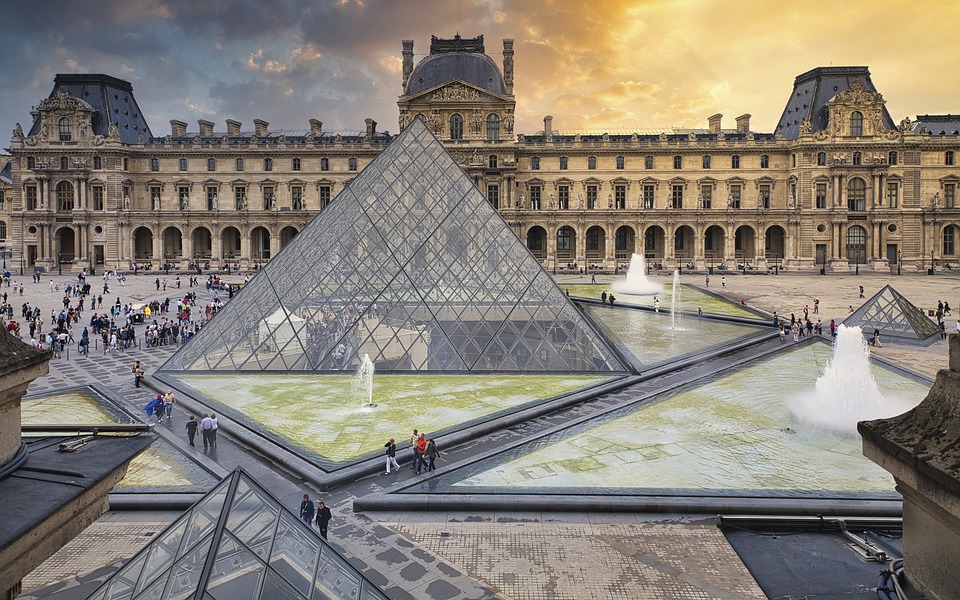Title: Exploring the Treasures of the Musée du Louvre
Introduction:
The Musée du Louvre, located in the heart of Paris, France, stands as one of the most revered and visited museums in the world. Originally a royal palace, the Louvre was transformed into a public museum at the end of the 18th century and has since grown to encompass a vast collection of art and artifacts that span human history. In this article, we will delve into the museum’s history, explore key pieces from its extensive collection, and provide insights into why it continues to captivate millions of visitors each year.
History of the Musée du Louvre:
The origin of the Louvre dates back to 1190 when King Philippe Auguste constructed a fortress on the site to protect Paris from Viking raids via the Seine River. However, the building was transformed into a royal residence during the French Renaissance under King François I, who also initiated the royal collection of art. Over the centuries, successive monarchs added to the collection and expanded the palace architecture.
The transformative moment for the Louvre came during the French Revolution, when it was decreed that the Louvre should serve as a public museum. Officially opened in 1793, the museum showcased 537 paintings and 184 other objects of art, many of which were formerly royal or church property confiscated during the revolution.
Notable Collections and Masterpieces:
The Louvre houses more than 380,000 objects and displays 35,000 works of art in eight curatorial departments. Below are some of the key collections and famous works housed within its walls:
-
Paintings: The painting collection in the Louvre is one of its most famous attractions, covering every European school from the 13th century to 1848. The most renowned painting is undoubtedly Leonardo da Vinci’s "Mona Lisa," known for her enigmatic smile. Other masterpieces include "The Raft of the Medusa" by Théodore Géricault, "The Wedding Feast at Cana" by Paolo Veronese, and "Liberty Leading the People" by Eugène Delacroix.
-
Egyptian Antiquities: Offering a remarkable journey through ancient Egypt, this department includes over 50,000 pieces covering 4,000 years of civilization. Highlights include the Seated Scribe, the Great Sphinx of Tanis, and a vast collection of mummies, statuary, jewelry, and tools.
-
Near Eastern Antiquities: This section presents an extensive array of artifacts that illustrate early civilization developments in the Near East, encompassing Mesopotamia, Persia, and the Levant. Significant items include the Code of Hammurabi and the winged human-headed bulls from Sargon II’s palace.
-
Greek, Etruscan, and Roman Collections: These collections showcase an exquisite selection of classical antiquities, such as the Venus de Milo and the Winged Victory of Samothrace.
-
Sculptures: Apart from classical sculptures, this department also highlights Medieval, Renaissance, and modern works. Notable pieces include Michelangelo’s Slaves and works by French sculptors like Jean-Antoine Houdon.
-
Decorative Arts: Encompassing a wide range of decorative objects from the Middle Ages to the 19th century, this section includes the Napoleon III apartments, an array of sumptuous furniture, tapestries, ceramics, and jewelry.
-
Islamic Art: Opened in 2012, this department displays over 3,000 works from Islamic civilizations ranging from Spain to India, covering the 7th to the 19th century.
- Prints and Drawings: Although not always on permanent display due to their sensitivity to light, this department holds tens of thousands of prints, drawings, and manuscripts from the Middle Ages to the present day.
Visitor Experience:
Visiting the Louvre can be a profound cultural experience, but also an overwhelming one due to its vast size and the richness of its collections. Exploring the entire museum can take several days. Hence, many visitors choose to focus on specific collections or select masterpieces. Additionally, the Louvre offers guided tours, audio guides, and educational workshops to enhance visitor engagement and understanding of its collections.
Conclusion:
The Musée du Louvre is not just a museum but a cultural symbol of France’s dedication to art, history, and education. Its extensive collections allow visitors to journey through time and experience humanity’s artistic expressions across civilizations. As the Louvre continues to expand and evolve, it remains a pivotal institution in the global cultural landscape, drawing art lovers, historians, and curious visitors from around the world.


